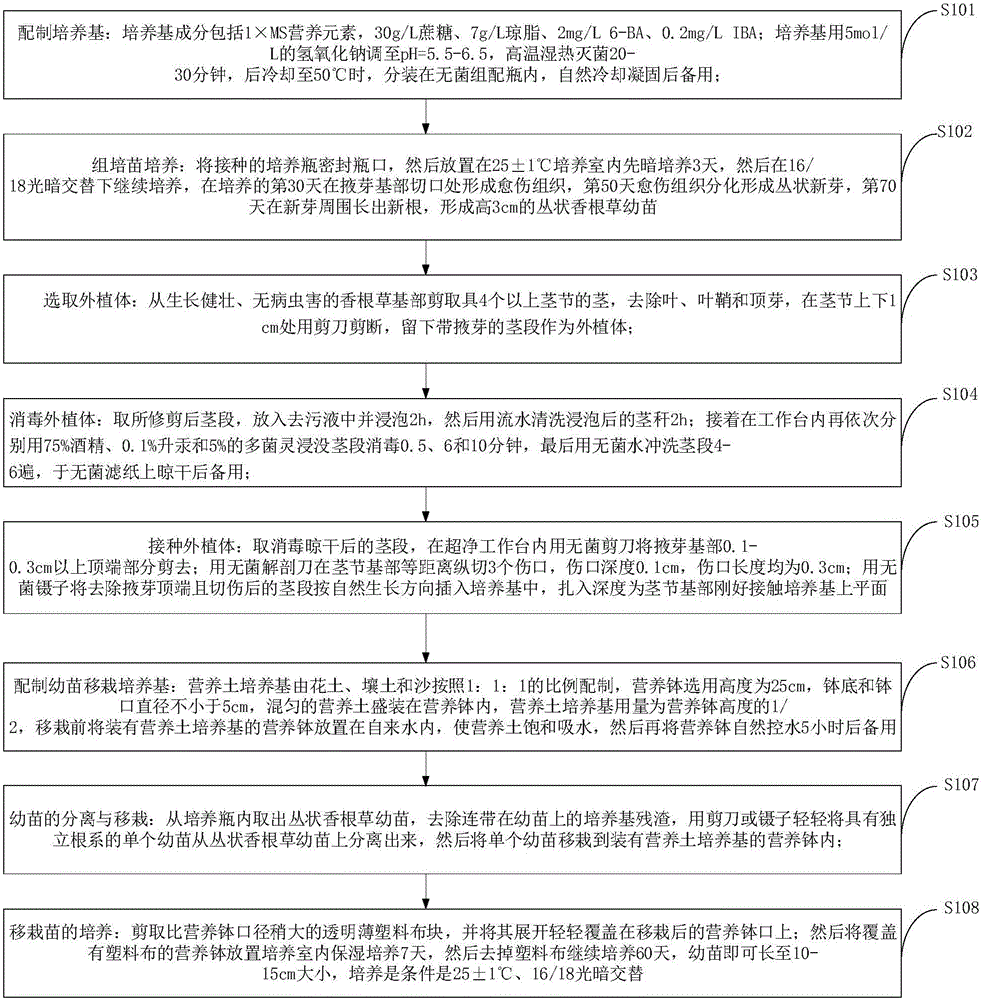Method for multiplying vetiver seedlings by means of calluses
A technology for callus and vetiver grass, applied in the field of plant reproduction, can solve the problem that the pollution rate in the cultivation process is not easy to control, and achieve the effects of optimizing the composition of the medium, reducing the probability of pollution, and reducing the number of transfers.
- Summary
- Abstract
- Description
- Claims
- Application Information
AI Technical Summary
Problems solved by technology
Method used
Image
Examples
Embodiment Construction
[0021] In order to make the object, technical solution and advantages of the present invention more clear, the present invention will be further described in detail below in conjunction with the examples. It should be understood that the specific embodiments described here are only used to explain the present invention, not to limit the present invention.
[0022] In the method of the invention, only one culture medium is used in the seedling induction process to complete callus induction, callus differentiation, sprouting and rooting, without transfer in the middle, thus reducing the probability of contamination. At the same time, the method also optimizes the composition of the medium and improves the induction efficiency.
[0023] The application principle of the present invention will be described in detail below in conjunction with the accompanying drawings.
[0024] Such as figure 1 Shown, the method for utilizing callus propagation vetiver seedling of the embodiment o...
PUM
 Login to View More
Login to View More Abstract
Description
Claims
Application Information
 Login to View More
Login to View More - R&D Engineer
- R&D Manager
- IP Professional
- Industry Leading Data Capabilities
- Powerful AI technology
- Patent DNA Extraction
Browse by: Latest US Patents, China's latest patents, Technical Efficacy Thesaurus, Application Domain, Technology Topic, Popular Technical Reports.
© 2024 PatSnap. All rights reserved.Legal|Privacy policy|Modern Slavery Act Transparency Statement|Sitemap|About US| Contact US: help@patsnap.com










